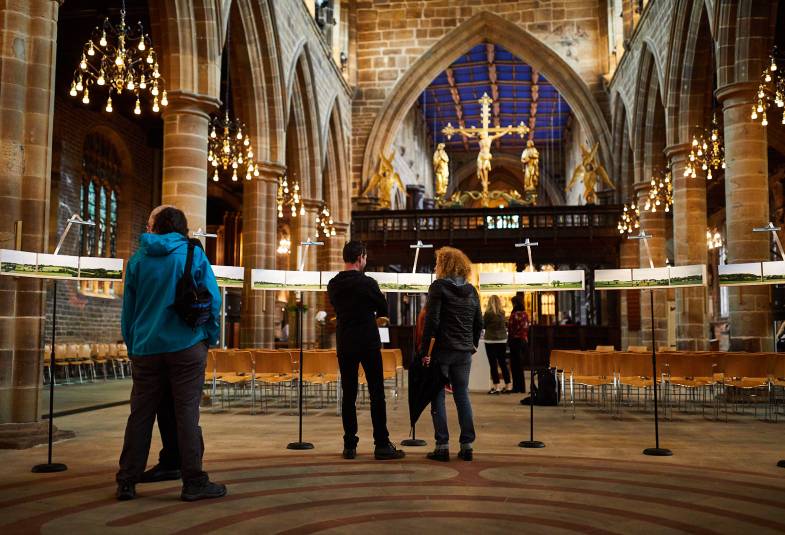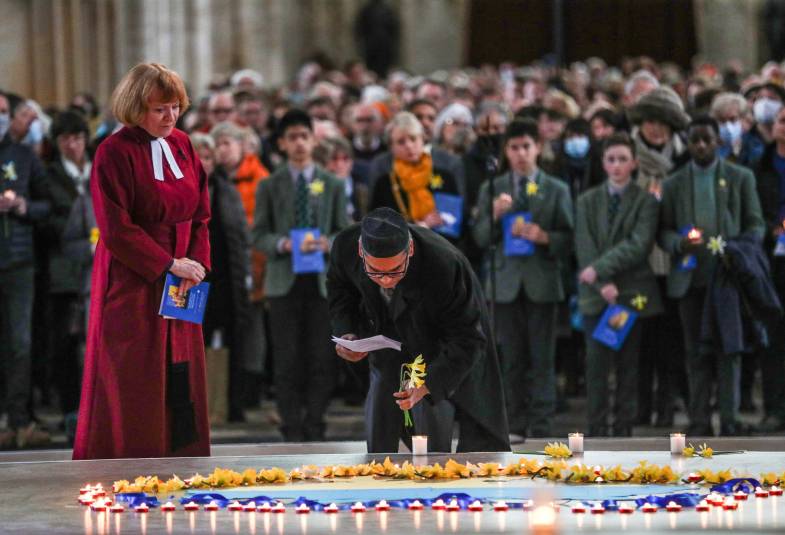18/03/2022

The Dean of Leicester, David Monteith, who Chairs the Church of England’s College of Cathedral Deans, was speaking as data from the height of Covid-19 restrictions was published, showing an expected fall in visitors and on-site worshippers.
“The simple message for everyone is 'come and visit your cathedrals!'” he said.
“Cathedrals across the country are working hard to welcome back more visitors and worshippers and the picture has improved in the time since this data was gathered, but It remains a challenging environment not least because of current utility cost increases.
“Cathedrals and churches are here to support their communities including people who are still struggling following Covid-19, and as focal points for prayer and reflection and action in light of world events including the war in Ukraine.
“Local people have supported their cathedrals throughout, and we are grateful for the emergency grant funding which the Government and Church have provided, but this has now ended.

“Cathedrals serve congregations and wider communities through worship, heritage, education and civic events.
“They are landmarks which characterise our regions and are testaments to faith and witness across the centuries. We are committed – with the help of all who visit, worship, and value them, to ensuring they continue long into the future. We exist for God’s glory, for all the peoples of England and for those who join us from further afield.”
He was speaking as the Church of England published Cathedrals data from 2020, and – separately - the Association of Leading Visitor Attractions (ALVA) published visitor numbers from 2021, showing a 57 per cent reduction across all attractions, with St Pauls Cathedral and Westminster Abbey both named in the report.
The Church of England’s Cathedrals Data from 2020 showed a 64 per cent reduction between 2019 and 2020 in on-site worshippers throughout the week, largely owing to the Government’s closure of buildings for much of the year.
The data also showed that cathedrals stepped up to the challenge of providing worship and support remotely during the pandemic, through an increase in reaching congregations via online, telephone, email and postal means. By October 2020, when most buildings had reopened for worship, online services were still being offered in the vast majority of cathedrals, many of which continue to the present.

Cathedrals have now streamed thousands of online services to people around the world, while elsewhere the Church of England’s national online services have been seen more than 16 million times since the start of the pandemic, with many more services broadcast by local churches.
In recent weeks cathedrals have become the focus of prayer vigils and community gatherings following the invasion of Ukraine, with many lighting up in the colours of the Ukrainian flag.
Cathedrals will also host services and prayer events for the National Day of Reflection on March 23, marking two years since the first Covid-19 lockdown in England.
A 2021 study by the economic research agency Ecorys showed that cathedrals attracted over 9.5 million tourist or leisure visitors in 2019, an increase of 15 per cent on the 2014 total of 8.2 million.
The additional expenditure generated by these visitors was estimated to be £128 million in the local economies concerned which, combined with employment, resulted in a total of approximately £235 million in local spending per year.